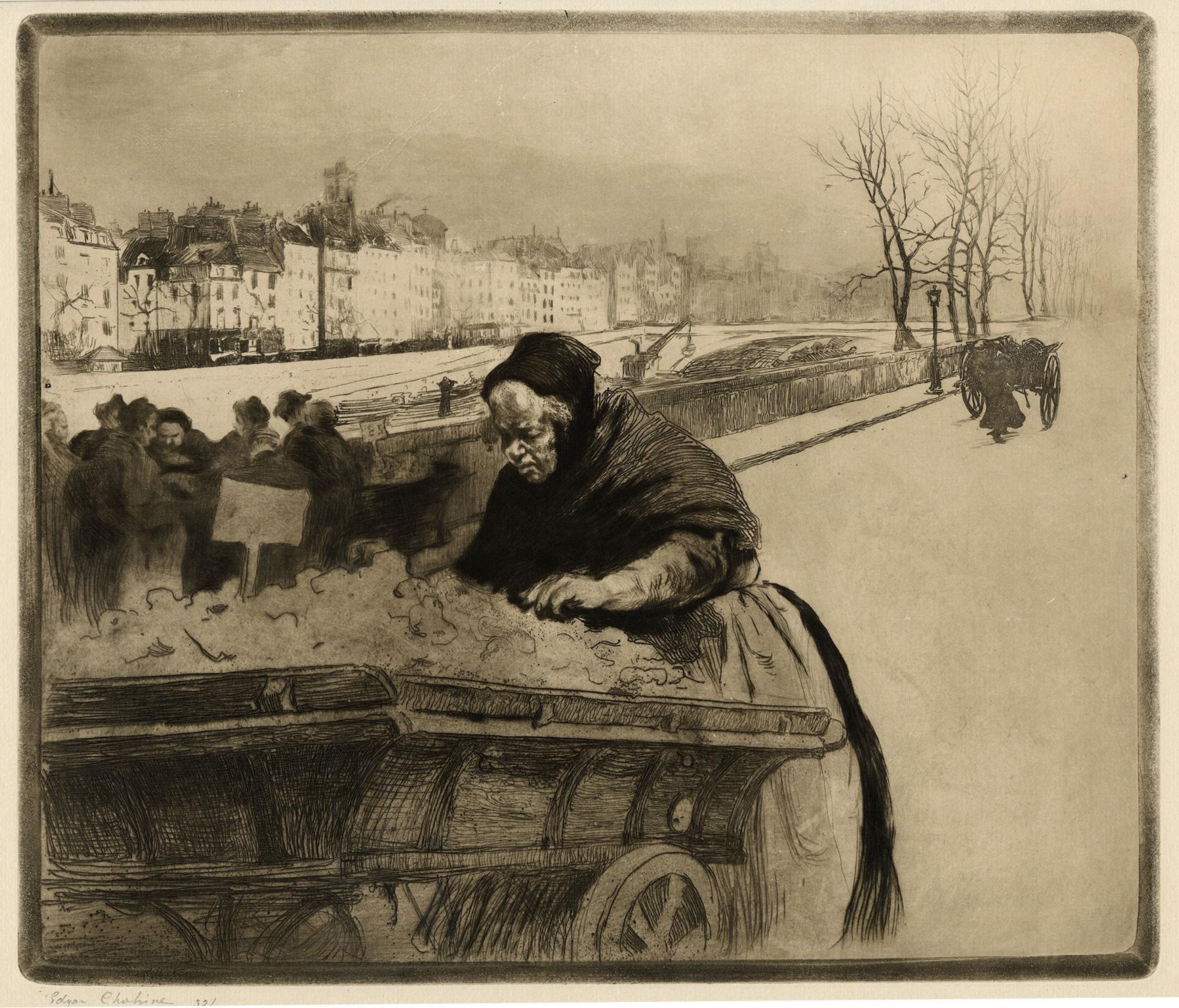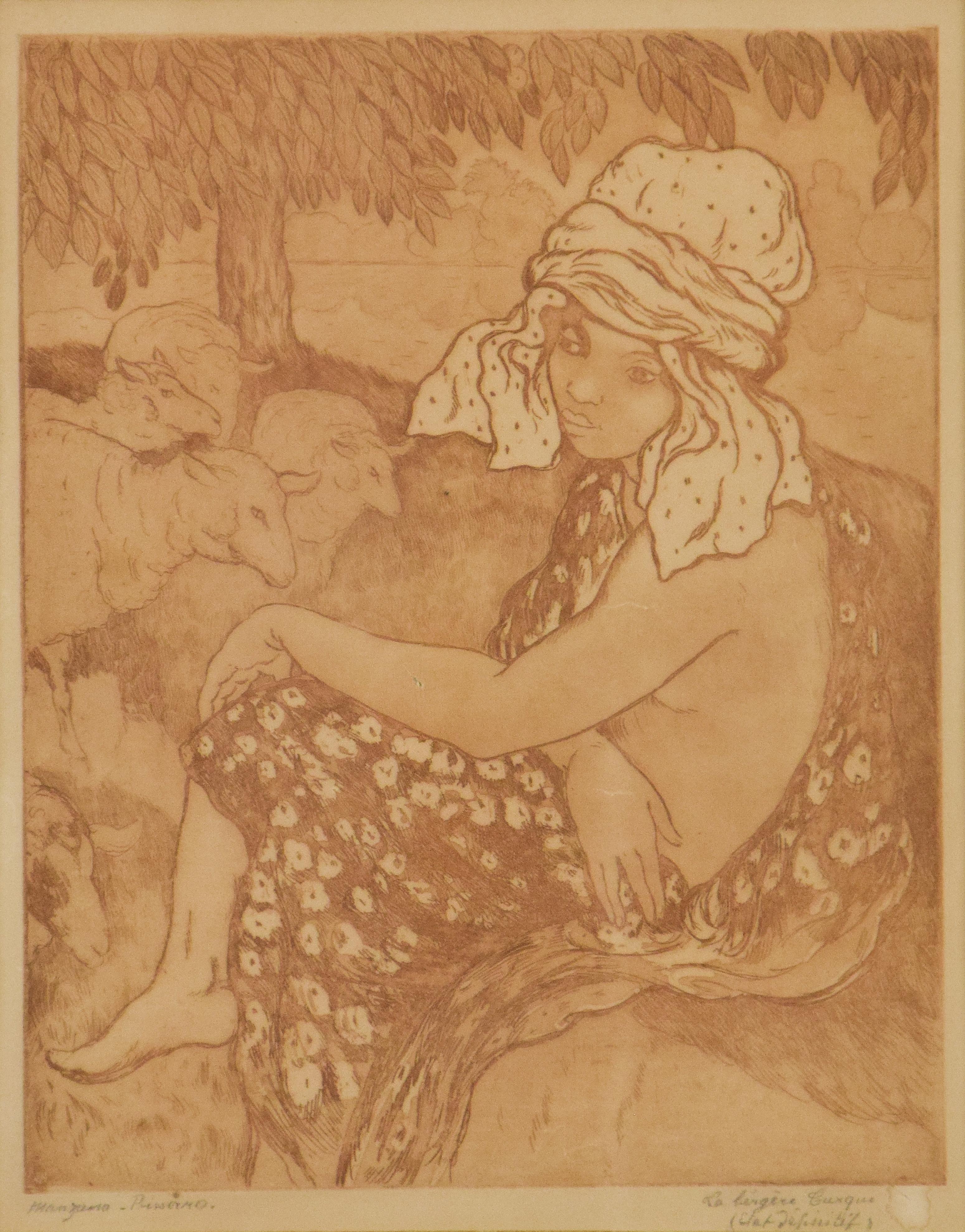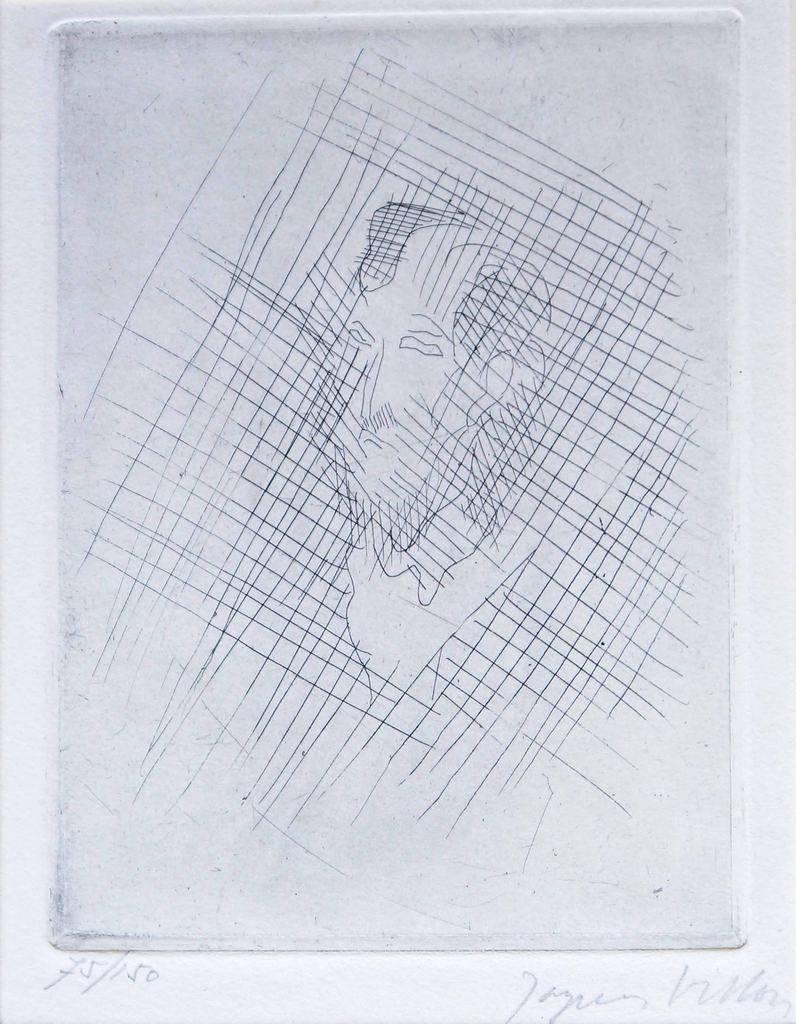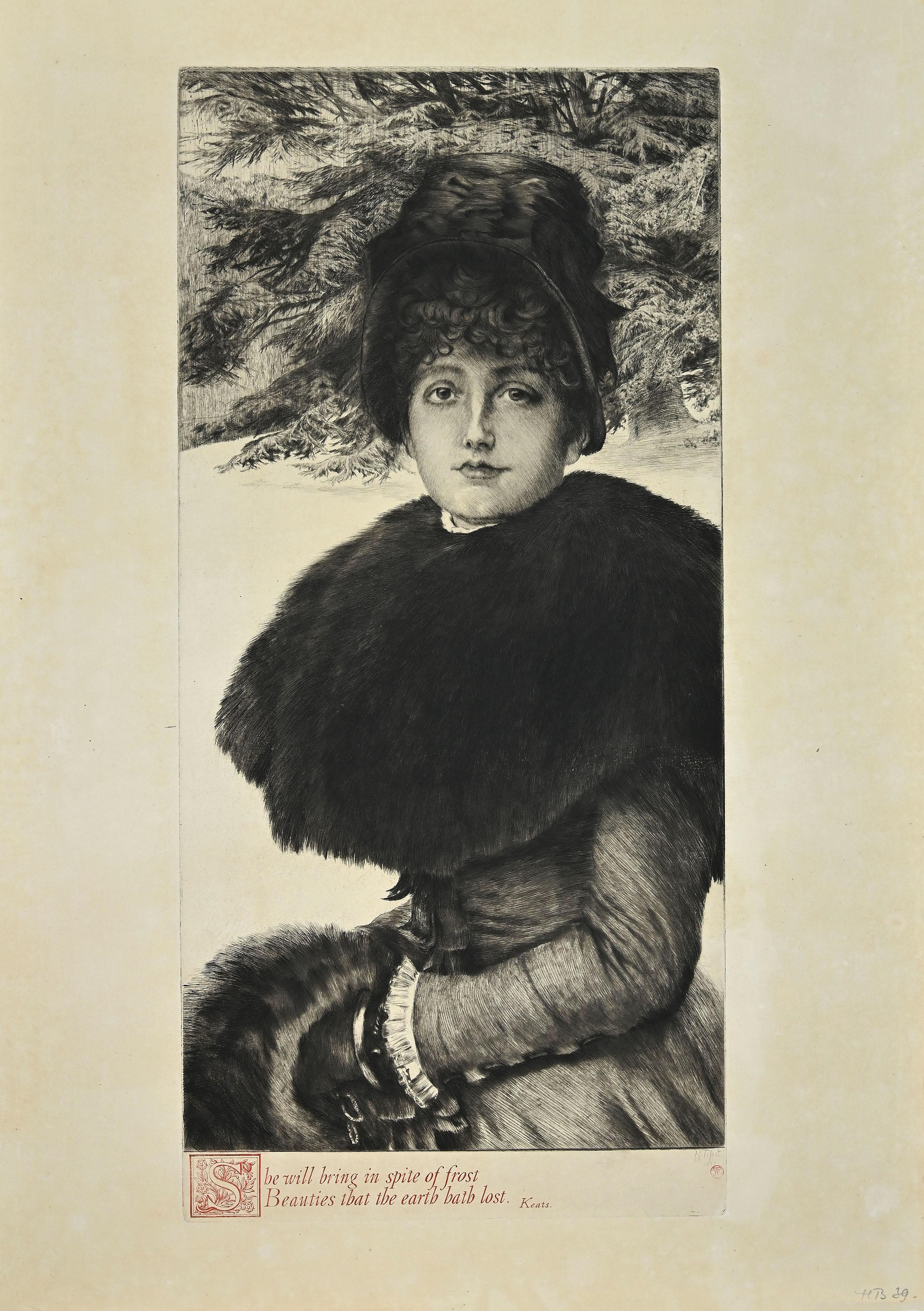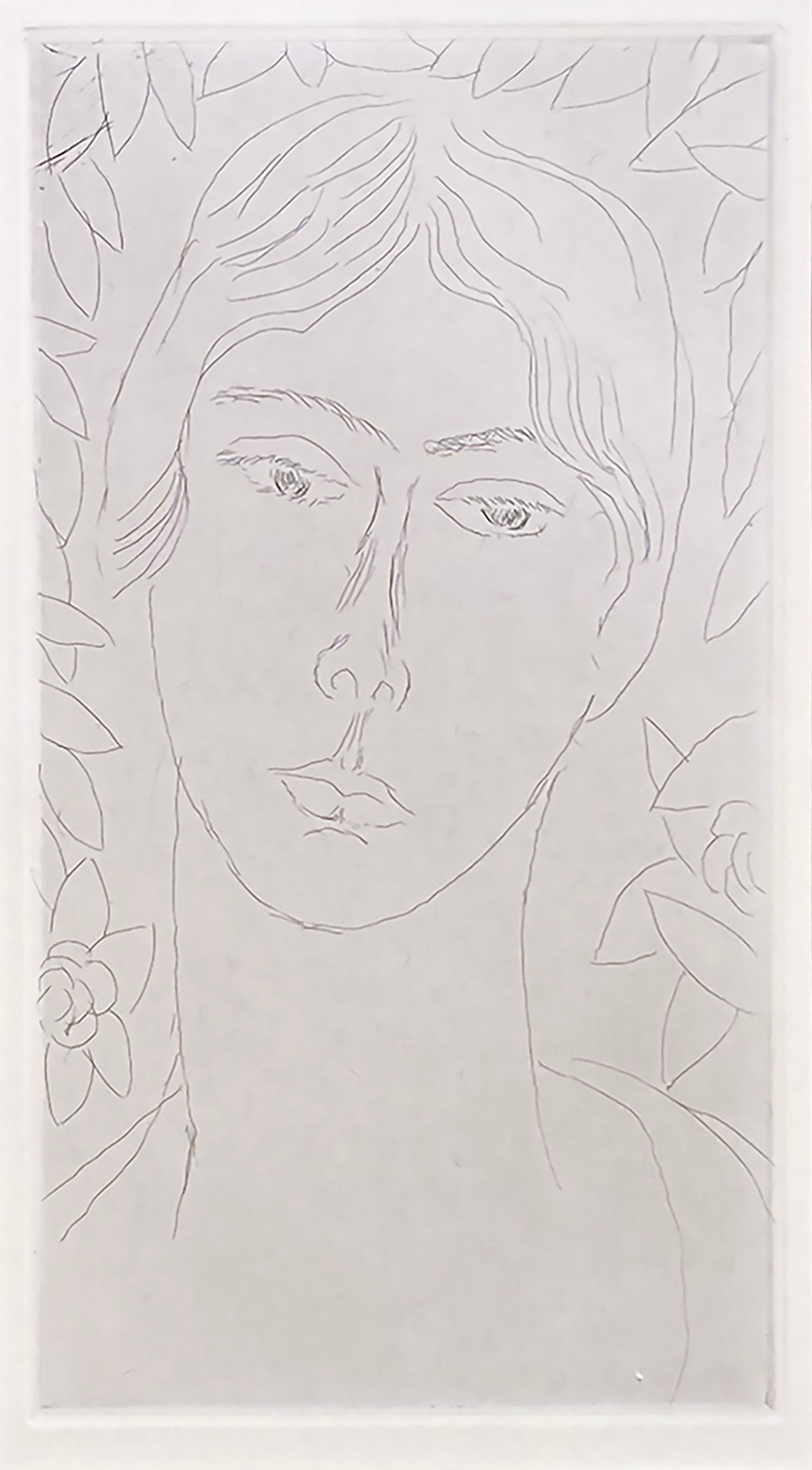Items Similar to La Femme aux Figures
Want more images or videos?
Request additional images or videos from the seller
1 of 5
Paul GauguinLa Femme aux Figures1894
1894
About the Item
Etched print in black on cream laid paper.
Excellent condition.
- Creator:Paul Gauguin (1848-1903, French)
- Creation Year:1894
- Dimensions:Height: 10.5 in (26.67 cm)Width: 16.5 in (41.91 cm)
- More Editions & Sizes:10.5x16.5Price: $1,500
- Medium:
- Movement & Style:
- Period:
- Condition:
- Gallery Location:Detroit, MI
- Reference Number:1stDibs: LU2127212589262
About the Seller
No Reviews Yet
Vetted Seller
These experienced sellers undergo a comprehensive evaluation by our team of in-house experts.
Established in 1987
1stDibs seller since 2022
- ShippingRetrieving quote...Ships From: Detroit, MI
- Return PolicyA return for this item may be initiated within 14 days of delivery.
More From This SellerView All
- Cathedral StepsBy Martin LewisLocated in Detroit, MI"Cathedral Steps" by Martin Lewis 1931 Drypoint Signed in the plate in a rectangle at lower right 42 recorded impressions including 7 trial proofs Image size: 10 ½” X 16 3/4” Paper ...Category
1930s Prints and Multiples
MaterialsEtching
- Rome 83 1973 (Homage to Franz Klein)By Aaron SiskindLocated in Detroit, MIPencil signed on recto and verso. Excellent shape.Category
1970s Prints and Multiples
MaterialsSilver Gelatin
- Kiyamachi Street, KyotoLocated in Detroit, MIWood block print, 1950. Strong impression in excellent condition. First edition, not a reprint. Published by Onsodo.Category
1950s Landscape Prints
MaterialsInk
- Jean Cocteau, ParisBy Arnold NewmanLocated in Detroit, MISilver gelatin print of photo, 1960. Excellent shape. Pencil signed and titled on the recto.Category
1960s Prints and Multiples
MaterialsSilver Gelatin
- FarewellBy Rockwell KentLocated in Detroit, MIPencil signed on front. Paper size is 9 1/4"x7.5"Category
1930s Modern Prints and Multiples
MaterialsLithograph
- Persona In Progress VBy Adnan ChararaLocated in Detroit, MIPersona In Progress V Prismacolor pencil on paper 16x20 in Adnan ChararaCategory
2010s Contemporary Figurative Drawings and Watercolors
MaterialsColor Pencil, Paper
You May Also Like
- La Marchande des Quatres-SaisonsBy Edgar ChahineLocated in Middletown, NYEtching with drypoint on cream wove paper, 11 3/4 x 13 3/4 inches (297 x 347 mm), full margins. Signed in pencil and numbered 32/40, lower margin. Minor mat tone and several small lo...Category
Early 20th Century Post-Impressionist Portrait Prints
MaterialsHandmade Paper, Rag Paper, Drypoint, Etching
- Print by Georges Manzana Pissarro 'La Bergère Turque' (The Turkish Shepherdess)By Georges Henri Manzana PissarroLocated in London, GB'La Bergère Turque' (The Turkish Shepherdess) by Georges Manzana Pissarro (1871-1961) Etching 33.5 x 27 cm (13 ¼ x 10 ¾ inches) Signed lower left, Manzana Pissarro, titled and inscri...Category
1920s Post-Impressionist Animal Prints
MaterialsEtching
- FigureBy Jacques VillonLocated in Roma, ITHand signed and numbered. Edition of 150 prints. Image dimensions: 15 x 11 cmCategory
1970s Post-Impressionist Portrait Prints
MaterialsEtching
- Femme Affranchie A' Quatorze Heures Chante Midi - Georges RouaultBy Georges RouaultLocated in Roma, ITSigned on plate. Edition of 450 prints, belonging to the suite “Miserere”, considered as the most important religious graphic work of XX century. The single prints, realized with a s...Category
1940s Post-Impressionist Figurative Prints
MaterialsEtching
- Promenade dans la Neige - Etching by J. Tissot - 1880By James TissotLocated in Roma, ITBeautiful print on verge crème, 2° state on 3, with letters printed in red. Stamp “Lugt 1545”. Little crack and fold on lower left margin of the sheet. Some small traces of oxidati...Category
1880s Post-Impressionist Portrait Prints
MaterialsDrypoint, Etching
- "Mlle Landsberg" (grade planche, pl. 16)By Henri MatisseLocated in Missouri, MO"Mlle Landsberg" (grade planche, pl. 16), 1914 Henri Matisse (French, 1869-1954) Signed and Numbered Lower Right Edition 12/15 Image size: 7 7/8 x 4 5/16 inches Sheet size: 17 11/16 x 12 1/2 inches With frame: 19 1/2 x 14 1/2 inches Henri Matisse came from a family who were of Flemish origin and lived near the Belgian border. At eight o'clock on the evening of December 31, 1869, he was born in his grandparents' home in the town of Le Cateau in the cheerless far north of France. His father was a self-made seed merchant who was a mixture of determination and tightly coiled tension. Henri had no clear idea of what he wanted to do with his life. He was a twenty-year-old law clerk convalescing from appendicitis when he first began to paint, using a box of colors given to him by his mother. Little more than a year later, in 1890, he had abandoned law and was studying art in Paris. The classes consisted of drawing from plaster casts and nude models and of copying paintings in the Louvre. He soon rebelled against the school's conservative atmosphere; he replaced the dark tones of his earliest works with brighter colors that reflected his awareness of Impressionism. Matisse was also a violinist; he took an odd pride in the notion that if his painting eye failed, he could support his family by fiddling on the streets of Paris. Henri found a girlfriend while studying art, and he fathered a daughter, Marguerite, by her in 1894. In 1898 he married another woman, Amelie Parayre. She adopted the beloved Marguerite; they eventually had two sons, Jean, a sculptor and Pierre who became an eminent art dealer. Relations between Matisse and his wife were often strained. He often dallied with other women, and they finally separated in 1939 over a model who had been hired as a companion for Mme. Matisse. She was Madame Lydia, and after Mme. Matisse left, she remained with Matisse until he died. Matisse spent the summer of 1905 working with Andre Derain in the small Mediterranean seaport of Collioure. They began using bright and dissonant colors. When they and their colleagues exhibited together, they caused a sensation. The critics and the public considered their paintings to be so crude and so roughly crafted that the group became known as Les Fauves (the wild beasts). By 1907, Matisse moved on from the concerns of Fauvism and turned his attention to studies of the human figure. He had begun to sculpt a few years earlier. In 1910, when he saw an exhibition of Islamic art, he was fascinated with the multiple patterned areas and adapted the decorative universe of the miniatures to his interiors. As a continuation of his interest in the "exotic", Matisse made extended trips to Morocco in 1912 and 1913. At the end of 1917, Matisse moved to Nice; he would spend part of each year there for the remainder of his life. A meticulous dandy, he wore a light tweed jacket amd a tie when he painted. He never used a palette, but instead squeezed his colors on to plain white kitchen dishes...Category
1910s Fauvist Figurative Prints
MaterialsEtching, Drypoint
Recently Viewed
View AllMore Ways To Browse
Vintage Singer Needles
Picasso Music
Victor Richardson
Running 2
Vintage Mexican Shirt
Sitting Bull Warhol
Vargas Pin Ups
Boleyn Necklace
Vintage Mexican Shirts
Shepard Fairey Only The Finest Poison
Vintage Pink Radio
Santisima Trinidad
Takeshi Takahara
Otis Kwame Quaicoe
Vintage Pink Lenox
Middle Eastern Screen
Kaws C10
Karen Kain
